Wstęp: Między sztuką a rzemiosłem. „Napis”: początki, dzieje, aktualności (Barbara Wolska)
Jubileuszowy, XXV numer czasopisma „Napis. Pismo poświęcone literaturze okolicznościowej i użytkowej”, założonego w 1994 roku przez Profesora Janusza Maciejewskiego, pierwszego Redaktora Naczelnego rocznika, nosi tytuł „Pamiątka, hołd, laudacja w literaturze i kulturze”.
W ćwierćwiecze swojego istnienia „Napis” wraca do korzeni – tego, co stanowiło jego wyróżnik, specjalność – do literatury zajmującej szeroką przestrzeń między twórczością wysokoartystyczną a produkcją literacką amatorów i autorów minorum gentium; między sztuką a rzemiosłem, między pisarstwem autorskim a folklorem środowiskowym, często bezimiennym.
Numer rozpoczyna obszerny wstęp Barbary Wolskiej, w którym przypomina się początki pisma i ukazuje jego ewolucję. W dziale „Rozprawy i materiały” znajdują się artykuły poświęcone pośmiertnym pochwałom, zamawianym dla członków rodu przez birżańskich Radziwiłłów (Mariola Jarczykowa), sposobom upamiętniania zasług i cnót obrońców ojczyzny w kazaniach pogrzebowych Fabiana Birkowskiego (Michał Kuran), utrwalonym w literaturze legendom bohaterskich postaci: biskupa Kajetana Sołtyka (Krystyna Maksimowicz) czy księcia Józefa Poniatowskiego (Roman Magryś), a wreszcie hołdów składanych przez poetów, malarzy i filozofów zmarłym wartym szacunku i pamięci – tym bardziej, jeśli byli to równocześnie przyjaciele lub krewni (rozprawy: Tadeusza Półchłopka o poetyckich laudacjach dla Józefa Dunina Borkowskiego, Julity Paprotnej o Jacku Malczewskim we wspomnieniach syna oraz artykuł Beaty Garlej o tekstach wspomnieniowych Romana Ingardena).
Część edytorska prezentuje przejście „między dawnymi a nowymi laty” – od edycji nieznanych listów z XVIII wieku (Bożena Mazurkowa), poprzez rozważania o wpływie reformacji na sferę mediów i komunikowania (Aleksandra Matykiewicz-Włodarska) i ciekawy przypadek „podwójnej laudacji” – równoczesnego hołdu dla biblioteki i człowieka (Wojciech Kaliszewski), po problematykę związaną z edytorstwem cyfrowym (Konrad Niciński, Bartłomiej Szleszyński). Dział Varia reprezentują cztery teksty, również związane z tematyką przewodnią numeru, mówiące o ostatnich słowach słynnych postaci (Magdalena Kreft), czczeniu rocznic narodowych (Magdalena Piotrowska), „krytycznym panegiryku” Hugona Kołłątaja dla miasta Moskwy (Marek Nalepa) oraz o zjawisku ekslibrisu, który wyraża zarówno szacunek dla księgi, jak i określa tożsamość jej właściciela (Barbara Stelingowska). Dział ten zamyka część ilustracyjna – prace fotograficzne studentów Akademii Sztuk Pięknych w Warszawie opatrzone ich komentarzami. Bogato reprezentowany jest również dział recenzji (teksty omówień pióra Bogdana Mazana, Marka Pąkcińskiego, Ewy Głębickiej i Pawła Dybla).
Zapraszamy do lektury najnowszego numeru i poznania przeróżnych sposobów, za pomocą których twórcy przez wieki oddawali cześć, utrwalali chwilę i walczyli z niepamięcią, posługując się w tym celu rozmaitymi gatunkami literackimi i środkami plastycznymi.
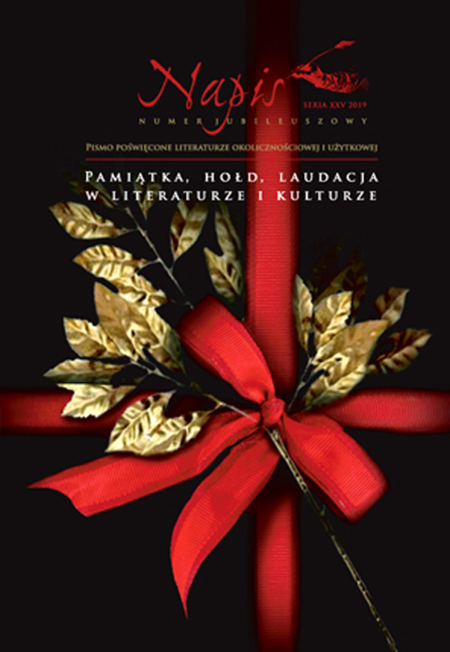
Wstęp: Między sztuką a rzemiosłem. „Napis”: początki, dzieje, aktualności (Barbara Wolska)
Mariola JARCZYKOWA
Sponsorowana pochwała. Funeralia Radziwiłłowskie z XVII wieku napisane na zamówienie
Artykuł (PDF) Show abstract Hide abstract
The aim of the article is to depict the material and creative background of funerary art in the Baroque era. It presents the circumstances of the origins of some of the works written after the death of Krzysztof Radziwiłł Piorun and his son, Janusz, which were commissioned by the family of the deceased. The memory of the Voivode of Vilnius Voivodeship was honoured in 1604 by lecturers from Leipzig and Basel, including, among others, the author of the funeral speech, Mateusz Dresserus. From the correspondence, it emerges that he was provided with the materials necessary to draw it up by the Radziwiłłs’ servant, Salomon Rysiński. It was also Rysiński who was asked for assistance by Caspar Dornau, an academic from Brzeg, who was listing the information he needed in order to write a funerary panegyric for Janusz Radziwiłł. Rysiński pointed to other potential creators of occasional texts, mainly the clients of the Biržai court. Foreign authors were remunerated for their funerary panegyrics, whereas the court poets could expect a bequest or an annual payment for their service.
Michał KURAN
Pamięć o heroicznych czynach i cnotach rycerskich sławnych obrońców ojczyzny utrwalona w kazaniach funeralnych Fabiana Birkowskiego OP
Artykuł (PDF) Show abstract Hide abstract
The study is dedicated to identifying the ways in which memory works in the funerary sermons by Fabian Birkowski, preached and published with the aim of commemorating the achievements of Jan Zamoyski, Jan Karol Chodkiewicz, Bartłomiej Nowodworski, Jan Wejher, Stefan Chmielecki, Zygmunt Śrzedziński, Krzysztof Zbaraski and Joachim Ocieski.
The aim of the work is to reconstruct the strategies of commemoration in the creative, dispositional and elocutionary dimensions of the sermons themselves, as well as in the elements of front matter and end matter of the pieces: the titles, epigraphs, prefaces and censor’s approvals. The commemoration is achieved through the depiction of the deceased’s accomplishments against the backdrop of biblical and mythological tradition, and of literature, from classical, through to medieval and late-Renaissance. The preacher strives for the inclusion of the deceased’s achievements in the canon of collective memory, in which they are preserved as excellent knights, leaders, chancellors or diplomats, proving their courage, valour, virtue, piety, concern for their fatherland and for the civil liberties of the nobility. The research material is also analysed in the context of the notions of memory related to the field of contemporary humanities (places of memory, collective memory, vehicles of memory, identity and post-memory).
Krystyna MAKSIMOWICZ
U źródła legendy poetyckiej biskupa krakowskiego Kajetana Sołtyka
Artykuł (PDF) Show abstract Hide abstract
Literature of the Bar Confederation created a positive legend of the Kraków’s bishop, Kajetan Sołtyk. Its point of birth was the abduction of the bishop from Warsaw Sejm (Parliament) of 1767. At that Sejm, the bishop became famous for being one of the main leaders opposing equality for dissidents, for which he paid with over five years in Russian captivity. The authors of the Bar poems used in this article concentrated on the martyrdom of the prisoner, his unshaken attitude and the readiness to sacrifice his life for the Catholic faith. They would place him in the context of saints, biblical characters and heroes of antiquity, who were paragons of behaviour.
The poems highlighted in the study are largely laudatory or canvassing in character – they call for not yielding on the issue of dissidents.
Tadeusz PÓŁCHŁOPEK
Literacki hołd poetów galicyjskich dla Józefa Dunina Borkowskiego
Artykuł (PDF) Show abstract Hide abstract
The article is devoted to one of the most outstanding figures of Polish ‘domestic’ Galician Romanticism – Józef Dunin Borkowski – about whom Anna Opacka wrote as of a ‘wrongfully forgotten poet’. The premature death of the animator of romanticising trends in Lviv (he lived just 34 years, died 18th June 1843) has disorganised the unity of the whole environment and disrupted the preparations for Album na korzyść pogorzelców, announced by the deceased. The comrades of the poet’s ‘literary employment’ commemorate him in an extraordinary tribute: his younger brother – Aleksander Dunin Borkowski – has completed (in 1844) the edition of the aforementioned album. It contained not only the artistic pieces given to this charitable initiative by the most important authors of the time, but also the intimate farewells to the deceased editor. And, it is exactly these texts, which hold the greatest value for history of literature, which became the subject of our exploration. August Bielowski, after the funeral, wrote an amicable recollection, which was, nota bene, an inestimable source of knowledge on the beginnings of Galician Romanticism. The second text, also an important testimony of remembrance, was an emotional poem written by Aleksander Dunin Borkowski, and which is a unique example of romantic funerary poetry.
Roman MAGRYŚ
Laudacja bohatera narodowego w „Pieśniach o księciu Józefie” Artura Oppmana
Artykuł (PDF) Show abstract Hide abstract
The article concentrates on the lofty representation of the protagonist of the collection of lyrical works. Pieśni o księciu Józefie make a reference, in their historical and axiological aspects, to the biography by Szymon Askenazy, Książę Józef Poniatowski 1763-1813 [Prince Józef Poniatowski 1763-1813]. That biography presents the central figure as an exemplary patriot and citizen, who does not hesitate to give his life for the fatherland. The poet, however, goes much further than Askenazy in elevating his hero, as he sacralises the figure of prince Poniatowski by making him the main martyr of the national cause, who pleads for Poland with God.
Julita PAPROTNA
Pożegnanie z ojcem. Jacek Malczewski we wspomnieniach syna Rafała
Artykuł (PDF) Show abstract Hide abstract
The aim of the article is to recreate the image of Jacek Malczewski as seen by his son, Rafał. The memoirs by Rafał Malczewski, published in the press in 1956, constitute the basis of the analysis. The correspondence of the Malczewski family was also used as supplementary material. The introduction discusses issues pertaining to the relationship between Jacek and Rafał, as well as the origins of the texts themselves. The analysis begins with the return to the author’s first memories related to his father. Rafał paints a picture of him through descriptions of space in which he lived, people he would meet, as well as through short daily-life anecdotes. Apart from characterising Jacek, Rafał attempts to define his painting. The purpose of recording the memoirs was to de-mythologise the reception of Jacek Malczewski’s art, and to present his figure as that of a man and artist evading fixed conventions.
Beata GARLEJ
Poetyka Ingardenowskich wspomnień hołdów oddawanych (nie tylko) fenomenologom
Artykuł (PDF) Show abstract Hide abstract
The article is dedicated to the poetics of obituaries homages by the Polish philosopher, ontologist and aesthetist, Roman Witold Ingarden. It centres on the issue of the extent to which the language of phenomenological perspective permeates the poetics of his occasional texts. The starting point is Ingarden’s interpretation of memory as ‘spiritual power’, and therefore one that is not restricted exclusively to the didactical aspect, but, most importantly, one that facilitates ethical and moral development. The course of the reflection, as presented in the text, is therefore determined not exactly by philological analysis, but by an analysis concentrating on the composition scheme, which is a result of applying the phenomenological philosophy method.
Bożena MAZURKOWA
Nieznane listy Wenantego Tyszkowskiego
Artykuł (PDF) Show abstract Hide abstract
The edition, which opens with a short introduction, comprises four letters from the Bernardine monk associated with Lviv (died 1783), preserved in the Radziwiłł archive. The correspondence was directed at Michał Kazimierz ‘Rybeńko’ Radziwiłł and his son, Karol Stanisław ‘Panie Kochanku’. The letters confirm a close relationship between the monk and the representatives of the powerful Lithuanian family. Upon reading the correspondence, one may conclude that the relations between Tyszkowski and the Radziwiłłs involved not only his attempts to secure support for the Order, but also mediating issues affecting the family or people associated with it. These issues included, inter alia, the scandal which reverberated throughout the country in 1764, after the wedding of Teofila Konstancja Radziwiłłówna (daughter of Rybeńko and the playwright, Franciszka Urszula) with Ignacy Feliks Morawski, an officer of the court militia, which was seen as a mésalliance.
Wenanty Tyszkowski, [Listy do Michała Kazimierza zwanego Rybeńko i Karola Stanisława zwanego Panie Kochanku Radziwiłłów] (oprac. Bożena Mazurkowa)
Wojciech KALISZEWSKI
Echo miłej przyjaźni. Drobiazg wierszowany wydobyty z teki dawno zapomnianych rękopisów
Artykuł (PDF) Show abstract Hide abstract
The manuscript, retrieved from the archives of the Library of the Lithuanian Academy of Sciences, presents an occasional letter by a famous Lithuanian archivist and collector, Wacław Gizbert Studnicki, offered to the founder and benefactor of the Vilnius library, Tadeusz Wróblewski, for his name day. The main body of the letter is constituted by an occasional poem, re-written by Studnicki, dated 1770 and signed by Ingacy Szadurski, which is a praise of library collections.
Aleksandra MATYKIEWICZ-WŁODARSKA
Efekt Lutra. Skutki reformacji w sferze mediów drukowanych i komunikowania
Artykuł (PDF) Show abstract Hide abstract
The aim of the article is to trace the consequences – often very distant in time – of the changes in the appearance, content and speed of circulation of publications initiated by Martin Luther.
Striving to reach as many people as possible with his Reformation ideas, Luther used and creatively developed the possibilities offered to him by printing with the use of movable type that had been invented shortly before then. He made his publications more attractive in terms of graphics, made them shorter, sped up their circulation, changed their style for one that was more accessible for the reader; he abandoned the usage of Latin in favour of the commonly understood German language. All of this resulted in a real boom for the publishing market – the development of the printing sector, an enormous increase in the numbers of printed brochures and books, an improvement of their quality, the development of the book market and the education of masses of recipients of the printed word. Over time, it also accelerated the circulation of information, and led to the creation of pre-journalistic forms. It was followed by an increase in literacy and the development of education – universal and uniform for both boys and girls. This had far-reaching consequences – raising the level of education of the whole society and the level of public debate, as well as encouraging a more active participation in the culture of books.
Konrad NICIŃSKI
Obecność przypisu w edycji cyfrowej – rekonesans
Artykuł (PDF) Show abstract Hide abstract
The objective of this paper is to show how the solutions suitable for traditional scholarly editing may work in the digital environment. The central issue of the article is to present the ways of adjusting the annotations (the footnotes in particular) to the rules of scholarly digital editing, and especially to the TEI technical standard. The paper aims to answer the following questions:
– how to make use of the possibilities offered by TEI elements and attributes?
– can the descriptions associated with TEI elements replace traditional foot- or endnotes?
– why do traditional footnotes, once incorporated into digital editing, require further reworking, sometimes both editorial and factual?
Bartłomiej SZLESZYŃSKI
O problemach zarządzania projektowego w humanistyce cyfrowej (na przykładzie Nowej Panoramy Literatury Polskiej)
Artykuł (PDF) Show abstract Hide abstract
The article presents the problems associated with managing digital humanities projects, as well as the issues of building and maintaining a team based on project funding, utilising the experiences of conducting digital projects in the years 2013–2018 by the team of the New Panorama of Polish Literature (NPLP), acting within the Institute of Literary Research of the Polish Academy of Sciences. Explored are the few advantages and numerous disadvantages of depending solely on grants when maintaining a team, referring to examples of completed and ongoing NPLP team projects. The article also highlights the problems encountered when working on those projects. The most important conclusion to be drawn from this analysis is that, although project funding can be used to begin the creation of a serious digital humanities project, maintaining it and securing stability for it is not possible without launching regular funding irrespective of the grants awarded.
Magdalena KREFT
In articulo mortis. O upamiętnianiu ostatnich słów
Artykuł (PDF) Show abstract Hide abstract
The topic of the work are the final words, uttered at the point of death, written down and commemorated by their witnesses and by posterity. Occassionally, it is only by decision of the addressees that a statement is ascribed a special significance, granted the features of an apophtegm, and its preservation in the memory of posterity as ‘winged words’ is determined. History and tradition retained many of them. Ultima verba come from rulers and commanders, geniuses and artists, saints and convicts, as well as ordinary people. At the point of death common, spontaneously uttered words gain the gravity of ‘testament’ and farewell, and the ones thought through by their author acquire a symbolic meaning. The article recalls the selected ‘final sentences’, but most importantly it proposes a reflection on what ulitma verba are, why we ascribe a significance to them, what are their authors’ intentions, what are their recipients’ emotions, how they ennoble the moment of death, and what they say about the human need to possess mementos from the dead – in this case, immaterial ones.
Magdalena PIOTROWSKA
Rocznice narodowe jako medium pamięci kulturowej
Artykuł (PDF) Show abstract Hide abstract
The article aims to answer several questions: can Polish national anniversaries (from the 19th Century to 1914) be treated as a medium of cultural memory? To what extent can the concept of cultural memory be a useful tool for analysing anniversaries? Do societies remember the national anniversaries, and how do they remember them?
The starting point are the concepts of the cultural memory studies researchers. The discussion refers to the ideas on, inter alia, the ways in which cultural memory operates (including the concepts of Aleida Assman and Astrid Erll, as well as the analyses by Paul Connerton). Utilising these studies has enabled an illustration of the issues related directly to the conventions and indicators of anniversaries (here, especially: collective memory, cultural memory and canon, media of collective memory, myth and ritual, ceremonies of remembrance, cultural performances, popular literature/culture and the memory of cultures). Theoretical discussions have been based on examples from the second half of 19th Century and early 20th Century (the press, anniversary pamphlets, anniversary handbooks, printed annotations for transparencies, and finally series of slides). The proposed chronological framework has allowed a depiction of the constancy of commemorative rituals and an examination of specific displays of anniversary celebrations (for example, the cult of heroes of the sword – text dated 19th Century to early 20th Century; among others, Sobieski, Kościuszko, Mickiewicz, Słowacki).
Marek NALEPA
Panegiryk à rebours. Hugona Kołłątaja mentalna topografia Moskwy z 1807 / 1808 roku
Artykuł (PDF) Show abstract Hide abstract
Due to the movement of the Napoleonic army towards Russia, Hugo Kołłątaj was removed from public life from January 1807 to May 1808. He spent that time in exile in Moscow, where he could prepare various notes and exchange letters. One effect of his literary activities was, among other things, the unfinished Opisanie miasta Moskwy [An Outlining of the City of Moscow]. Due to the poorly legible, draft form of the text, it remained as a manuscript for many years. It was only made available in print in 1954 by Stefan Białas, in the “Kwartalnik Instytutu Polsko-Radzieckiego” [“The Polish-Soviet Institute Quarterly”]. Written in ‘Sterne’s style’, it can be characterised by a variety of discursive forms. There are digressions, inversions, witty repartees, sometimes tedious ponderings, anecdotes, as well as autothematic and autobiographical threads, all contributing to the creation of a spiritual and intellectual portrait of their author.
In Opisanie miasta Moskwy, Kołłątaj paints an image of Moscow that is self-contradictory, inconsistent and unfavourable to Alexander I’s enlightened empire: with a backward, superstitious people manipulated by the priests, uneducated and corrupted clergy, and with a lack of zest and creativity in every possible expression of culture. This is why the text is something of an à rebours laudatio, which accumulates all of the Deputy Chancellor priest’s previously manifested prejudices towards Russians.
The article highlights the criticism to which Kołłątaj subjected the syncretism and architectural disarray of the Kremlin and Kitay-gorod’s buildings and spatial planning, as well as a progressive (for the early 19th century) praise of the arrangement of green spaces within the city.
Barbara STELINGOWSKA
Ekslibris – artystyczna personalizacja
Artykuł (PDF) Show abstract Hide abstract
An ex-libris is a personalised mark of ownership of a book, used by a holder of a collection, which highlights their bibliophilic attitude to their library. It becomes proof of a person’s distinctive connection with a book, as well as an expression of respect and diligence. In the past, it was meant to act as a reminder to return the copy, in a timely manner, to the person from whom it was borrowed. The ex-libris also identifies collections, protecting them against theft. Taking various shapes and forms, created in an ordinary or artistic fashion, it becomes a graphic ornament of a book, as well as a ‘portrait of the interests of a library’s owner’ (Encyklopedia wiedzy o książce). The aim of the article is to draft a panorama of the history of the ex-libris in Polish literature. Special attention is given to the most commonly appearing themes, depicted with specific examples, as well as to the contemporary changes and transformations of the ex-libris form. The article presents, among other aspects, the specifics of the bookplate. It also discusses the topics of memory and identification. It outlines an area known only to a particular group of readers, as well as promoting the creation of the ex-libris and encouraging the cultivation of this type of activity.
Pamiątka, hołd, laudacja. Prace studentów Akademii Sztuk Pięknych w Warszawie
Komentarze autorów do fotografii
Bogdan MAZAN, Funeralne (nie)oczywistości i olśnienia (T. Budrewicz, Pogrzeby pisarzy polskich XIX wieku, Wydawnictwo Naukowe UP, Kraków 2019)
Marek PĄKCIŃSKI, Długi cień antysemityzmu (M. Domagalska, Zatrute ziarno. Proza antysemicka na łamach „Roli” (1883-1912), Polskie Towarzystwo Historyczne, Wydawnictwo Neriton, Warszawa 2015)
Ewa GŁĘBICKA, Księga krakowska, czyli o Dąbrowskiej inaczej (Rozczytywanie Dąbrowskiej, red. D. Kozicka, M. Świerkosz, Wydawnictwo UJ, Kraków 2018)
Paweł DYBEL, Poezja świata, który stał się atrapą (S. Czerniak, Powrót zdarzeń, posłowie M. Pieczara, Instytut Wydawniczy Książka i Prasa, Warszawa 2019)
Noty o autorach artykułów


Anna Fabrycy
W mojej fotografii zestawiłam dwa symbole: wieczne pióro i płomień. Pierwsze z nich oznacza twórczość literacką, drugie – pamięć. W połączeniu przypominają świecę, która również kojarzy się z obchodzeniem urodzin.

Kamil Kubik
świta
ciepłe miejsce po tobie
puste
zapach pozostał
zlewając się z brzaskiem dnia
na wspomnienie drżę
zmięta pościel jak pamiątka (tekst autorski)
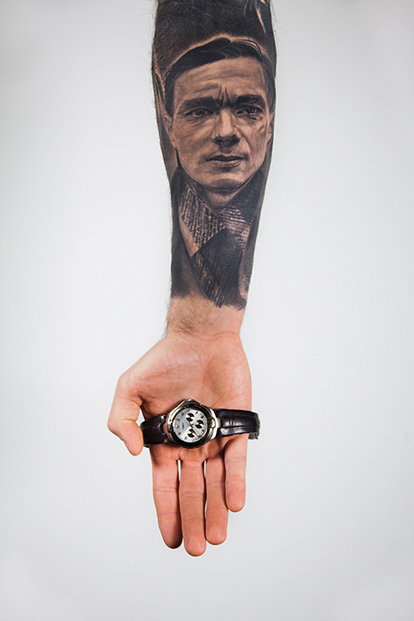
Karolina Grabowska
„Wspomnienie jest formą spotkania” – Khalil Gibran (https://pl.m.wikiquote.org/wiki/Khalil_Gibran)
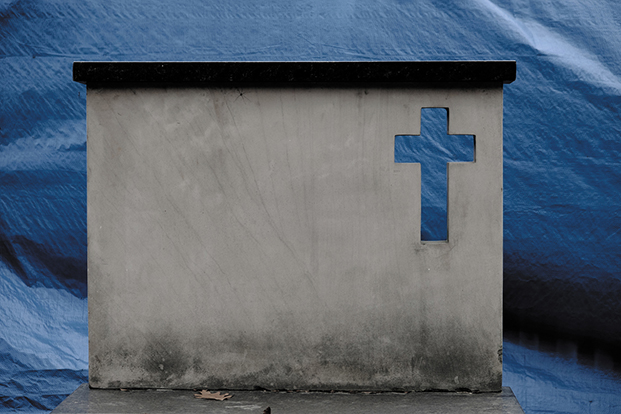
Piotr Królikowski
„Nagrobki pozbawione napisów znajdujące się na plastikowym tle mają uświadamiać, że pamięć ma moc ożywania przedmiotów. Gdyby nie ludzka potrzeba upamiętnienia danej osoby, nagrobek pozostawałby jedynie oszlifowanym kamieniem wystawionym na sprzedaż. Fotografie podkreślają, że ludzie dążą do nadawania form swoim wspomnieniom, aby przedłużyć ich żywotność” – Jan Romanowski (słowa przyjaciela)

Anna Kordulewska
100 lat!


Sylwia Rusinek
25 lat „Napisu”

Natalia Szymala
Jubileusz „Napisu”

Natalia Truszczyńska
To nie starość.
To miłość, radość, troska, ból, cierpienie.
To wszystkie emocje, które nam towarzyszą.
To nie zmarszczki.
To pamiątka życia, które mogliśmy przeżyć.
To my i nasza historia. (tekst autorski)

Chiara Carti
Łzy szczęścia. Wszystkie emocje, niezależnie od tego, czy negatywne, czy pozytywne, czynią nas żywymi, karmią i chronią, sprawiają, że doznajemy niemożliwych do określenia uczuć. Ogrom emocji ogarnia nasze ciała, gdy otrzymujemy jakąś wiadomość, gdy ktoś nas zaskakuje, a czasem nawet, gdy udaje się nam osiągnąć coś, na czym bardzo nam zależało. W jednym momencie czujemy się jednocześnie między innymi zaskoczeni, kochani i niezwyciężeni. To właśnie te emocje są, jeśli nie niemożliwe, to z pewnością trudne do wyrażenia słowami. Fotografie stają się jeszcze silniejszym środkiem wyrazu niż słowa, o czym bardzo dobrze przypomina nam Isabel Allende: „Piękne zdjęcie opowiada historię, odkrywa miejsce, wydarzenie, stan umysłu i jest ono o wiele potężniejsze niż tysiąc zapisanych stron”.
W tym zdjęciu chciałam zawrzeć najczystszą i najpotężniejszą emocję ze wszystkich: radość. Udało mi się to dzięki zobrazowaniu jej w krótkim momencie wypełnionym emocjami: wtedy, gdy pojawiają się łzy szczęścia.

Rafał Kruszka
Pamiątka. Fotografia może być próbą ocalenia fragmentu historii od zapomnienia. Czy zatem sfotografowanie przedmiotu może przenieść funkcję pamiątki z przedmiotu na jego utrwalony wizerunek?
Fotografia jest też językiem – podatnym na manipulację i przekształcenia. Nawet występujący obok obrazu fotograficznego tekst, często umieszczający przekaz wizualny w kontekście, tłumaczy, co widz powinien zobaczyć na zdjęciu, może spełniać funkcję nie tylko objaśniającą treść fotografii. Rola tekstu w tym zestawieniu wydaje się nadrzędna.
Dlatego sama fotografia jest często tylko tą szkatułką, pojemnikiem, kontenerem dla idei i myśli przekazywanych słowem.
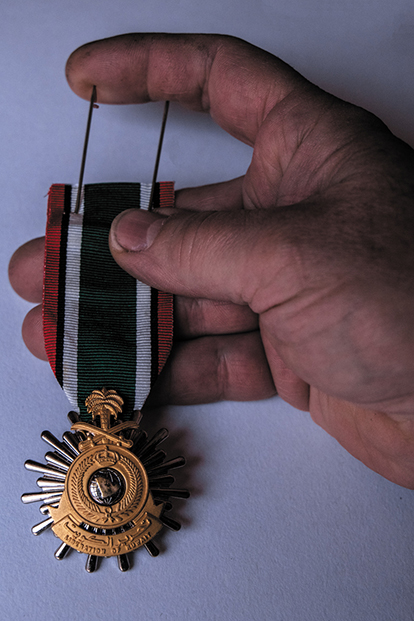
Martyna Ginda
Kawałek metalu z kolorową wstęgą,
Naznacza wspomnienie stanowczą pręgą.
Czy puste ciała winią umysły w niewoli,
Czy milkną, pojąc się cudzą mordęgą? (tekst autorski)
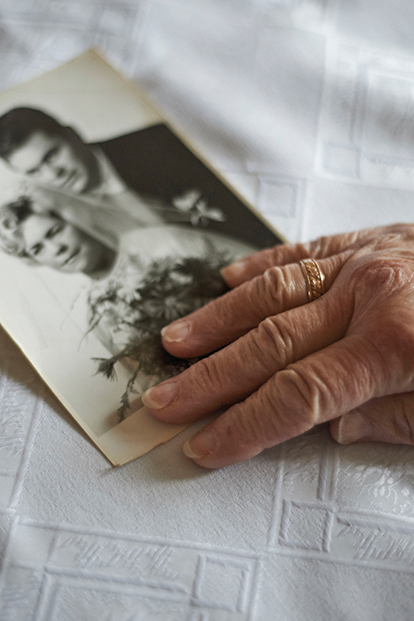
Paulina Brzezińska
Ślub łączy na zawsze dwoje kochających się ludzi. Obrączki pozostają przepiękną pamiątką, która każdego dnia przypomina o tej wyjątkowej chwili w życiu.
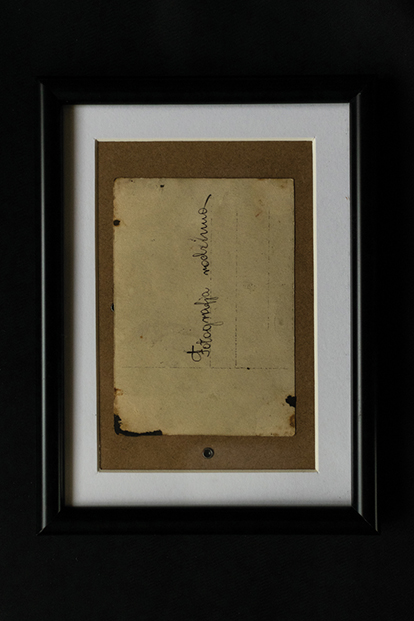
Krzysztof Oleksiak
Czy zdjęcie można oglądać tylko z jednej strony? Wspomnienia zakodowane na materiale fotograficznym zacierają się poprzez upływ czasu, lecz pamięć o nich przedłuża się dzięki słowom zapisywanym i przekazywanym z pokolenia na pokolenie na rewersach fotografii.

Katarina Šimeková
„W fotografii podoba mi się to, że można uchwycić moment, który zniknął na zawsze, i taki, który jest niemożliwy do odtworzenia” – Karl Lagerfeld (https://niezleaparaty.pl/cytaty-fotograficzne/)
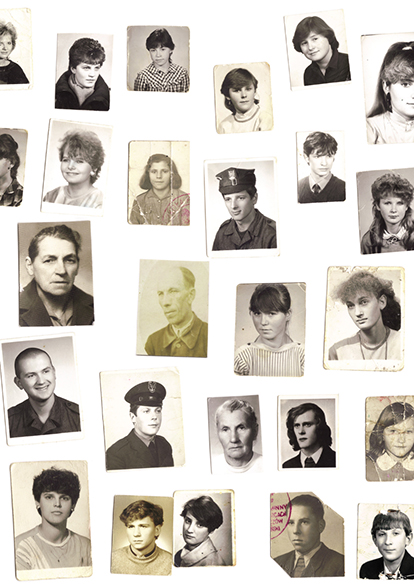
Natalia Czuba
Twarze, oczy, usta, włosy,
Mądre, biedne, smutne kłosy
Pamiętają każdą drogę,
Zmarszczką siejąc pustą trwogę. (tekst autorski)

Zuzanna Hanc
Ludzka pamięć jest nietrwałą materią, ulegającą niszczeniu i zniekształcaniu wraz z upływem czasu. W zatrzymaniu wspomnień lub emocji pomocne są przedmioty związane z konkretnymi wydarzeniami lub osobami. Dają one materialne świadectwo chwil, które już minęły, potrafią przywołać ich ulotność i dawne emocje. Są to często przedmioty o niepozornym wyglądzie, ale ogromnej wartości dla osoby, której pamięć zatrzymują w sobie.

Dawid Grzelak
W dzisiejszym świecie media społecznościowe oraz towarzyszące im komunikatory stały się formą zapisu naszej codzienności i swego rodzaju pamiętnikiem. Niejednokrotnie podniosłe życzenia, gratulacje i wyrazy współczucia pojawiają się obok wiadomości o zepsutej pralce czy zdjęcia potrawy, którą właśnie spożywamy. Zaciera się granica między rzeczami ważnymi a banalnymi, a my tworzymy własną historię, która już na zawsze zostawi swój ślad w Internecie.
